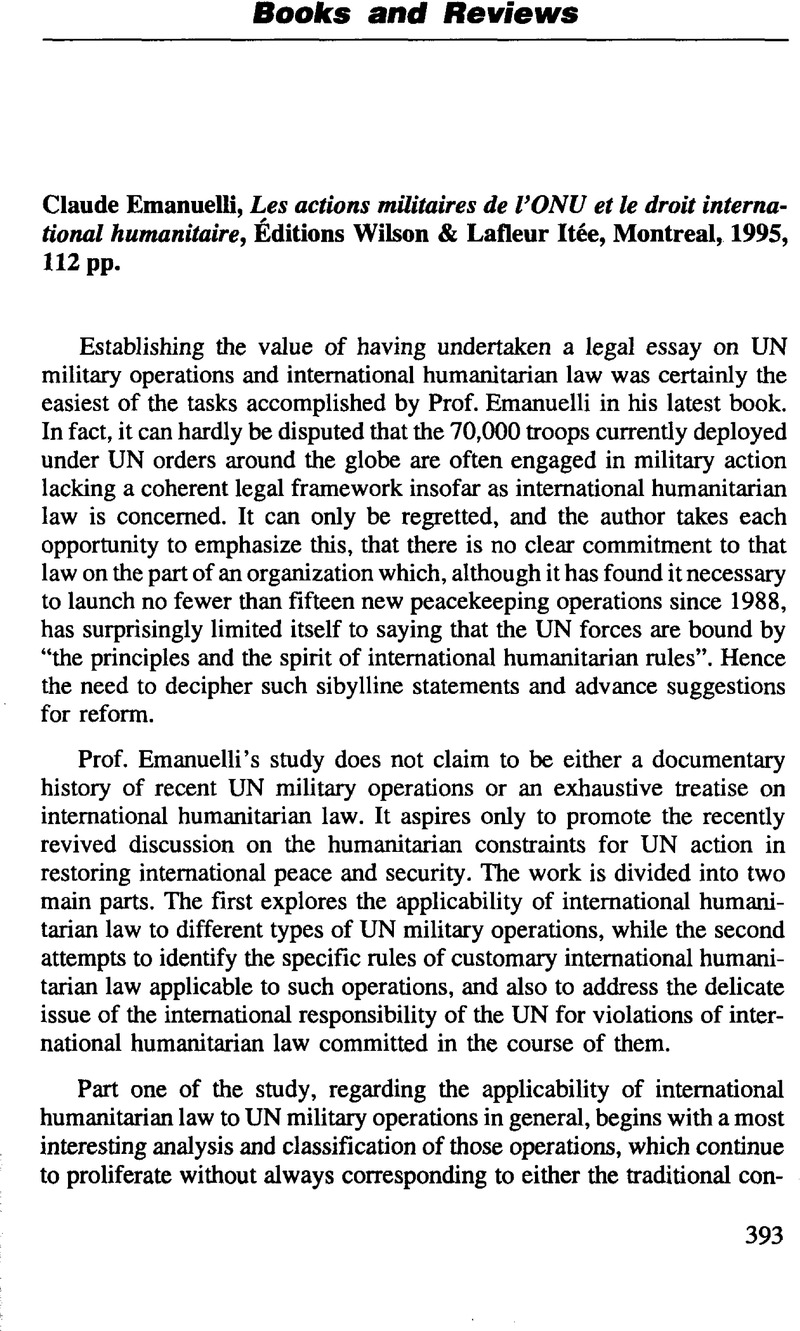No CrossRef data available.
Article contents
Claude Emanuelli, Les actions militaires de l'ONU et le droit international humanitaire, Éditions Wilson & Lafleur Itée, Montreal, 1995, 112 pp.
Published online by Cambridge University Press: 23 November 2010
Abstract

- Type
- Books and Reviews
- Information
- International Review of the Red Cross (1961 - 1997) , Volume 36 , Issue 312 , May 1996 , pp. 393 - 397
- Copyright
- Copyright © International Committee of the Red Cross 1996
References
1 Certain authors, for instance, would support the idea of a double, or parallel, responsibility of the UN and the contingent-contributing State for illicit acts occurring in the context of peacekeeping operations. For some penetrating remarks on this, see Condorelli, L., “Le statut des forces de l'ONU et le droit international humanitaire” 78 Rivista di diritto internazionale, 1995, pp. 881–906 Google Scholar, and Gonzalez, M. Pérez, “Les organisations Internationales et le droit de la rdsponsabilité”, 1988, pp. 85–86.Google Scholar Cf. Kamenov, T., “The origin of state and entity responsibility for violations of international humanitarian law in armed conflicts” in Kalshoven, F. & Sandoz, Y. (eds.), Implementation of International Humanitarian Law, 1989, pp. 187–193.Google Scholar
2 For a critical analysis of this instrument, see Emanuelli, C., “La Convention sur la securité du personnel des Nations Unies et du personnel associé: des rayons et des ombres”, 99 R.G.D.I.P., 1995, pp. 849–880 Google Scholar, and Bourloyannis-Vrailas, C., “The Convention on the Safety of United Nations and Associated Personnel”, 44 I.C.L.Q., 1995, pp. 560–590 Google Scholar.


